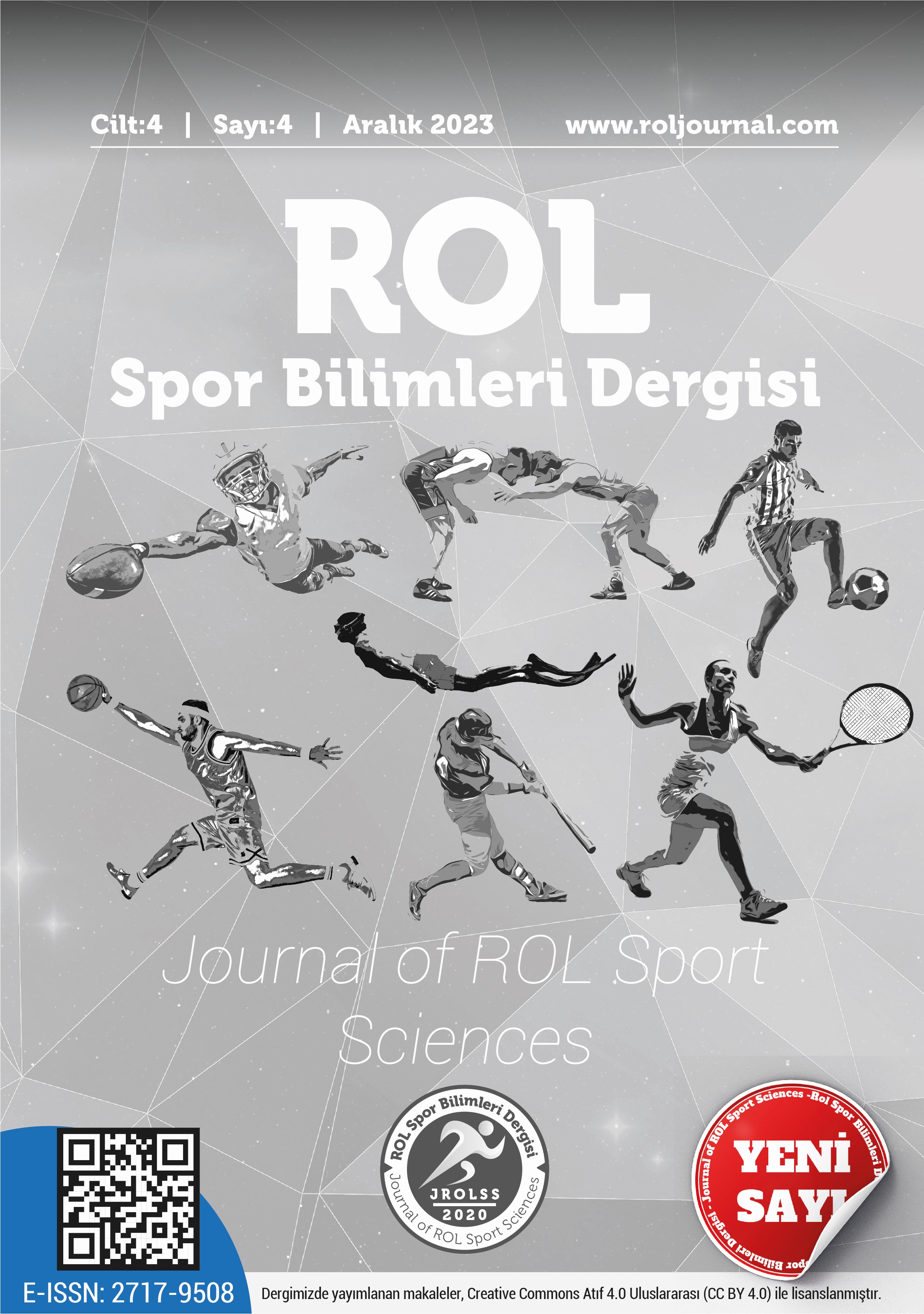An examination of the totem behavior of professional football fans
DOI:
https://doi.org/10.5281/zenodo.10430153Keywords:
Professional Football, fans, totem behaviorsAbstract
This study was conducted to investigate the totemic behavior of professional soccer fans. The study was conducted with a student (N=132) studying at the Faculty of Sports Sciences at Erciyes College (Turkiye). Prior to the study, a questionnaire was created using Google forms. In the questionnaire, some demographic information and totem behaviors were requested. The percentage and frequency distributions of the data obtained were calculated statistically. The students participating in the study were (52%) male, (48%) female, (40%) aged 19-20 years, (39%) aged 21-22 years. According to the status of the team the students support, Galatasaray FC (45%), Fenerbahce FC (36%) and Besiktas FC (17%) are soccer club fans. Among the very different answers students gave to the totem behaviors were wearing a team jersey, not watching the game, praying, singing the team anthem, watching while standing, holding the hand of a loved one, closing their eyes during goal attacks, watching the TV screen from behind, drinking Turkish coffee, not speaking, holding a Turkish teacup in the hand, sitting on the right side of the seat, hanging the team flag, praying (salad), keeping still and not blinking, supporting the opposing team such as the behaviors mentioned. It can therefore be stated that a quarter of the fans definitely exhibit totem behaviors. Among the totem behaviors, wearing the team jersey is the most popular, while singing the team anthem, hanging the team flag and believing by feeling are outstanding results. It is recommended that soccer clubs select the jerseys most desired by fans in colors and shapes that match the club’s history and culture. An average pricing policy for team jersey should be established and prices should be determined that are suitable for each income group.
References
Belk, R. W., Wallendorf, M., & Sherry, J. F. (1989). The sacred and the profane in consumer behavior: Theodicy on the odysssey. Journal of Consumer Research, 16(1), 1–38.
Carlson, B. D., Mowen, J. C., & Fang, X. (2009). Trait superstition and consumer behavior: Re-conceptualization, measurement, and initial investigations. Psychology & Marketing, 26, 689–713.
Catsoulis, S. (2011). Black cats and hockey tape: Investigating routines and superstitions among professional hockey athletes: A qualitative study, [Master of arts thesis, York University] Graduate Program in Kinesiology and Health Science.
Clemence, M., & Chimininge, V. (2015). Totem, Taboos and sacred places: An analysis of Karanga people’s environmental conservation and management practices. International Journal of Humanities and Social Science Invention, 4(11), 7-12.
Fernandez, K. V., & Lastovicka, J. L. (2011) Making magic: Fetishes in contemporary consumption. Journal of Consumer Research, 38(2), 278-299.
Foster, D. J., & Weigand, D. A. (2006). The effect of removing superstitious behavior and introducing a pre-performance routine on basketball free-throw performance, Journal of Applied Sport Psychology, 18, 167-171.
Hobsbawm, E., & Terrence, R., (1983). The Invention of tradition. Cambridge University Press.
Hoffman, S. J. (1992). Sport and religion. Human Kinetics Books.
Jahoda, G. (1969). The psychology of superstition. The Penguin Press.
Kose, H., Argan, M., & Cimen, İ. (2015). The dimensions of superstitious beliefs and behaviors: A descriptive quantitative study on soccer fans in Turkey. International Journal of Global Business, 8(1), 27.
Oxford, (2023, September 15). Totem, https://www.oxfordlearnersdictionaries.com/definition/english/totem?q=totem
Quintão, R. T., Pereira, V. F., & Baêta, R. A. S. (2019). Magic consumption: A study in the context of soccer fans. Brazilian Journal of Marketing, 19(1), 17-28.
Mauss, M. (1990). The Gift: The form and reason for exchange in archaic societies. Norton.
Matute, H. (1994). Learned helplessness and superstitious behavior as opposite effects of uncontrollable reinforcement in humans, Learning and Motivation, 25, 216–232.
Sherry J. J. F., & Kozinets, R. V. (2003). Sacred iconography in secular space: Altars, alters and alterity at the burning man project. Contemporary Consumption Rituals: A Research Anthropology, 291-311.
Soyguden, A. (2016). Investigation of Income Sources of Professional Football Clubs. Ömer Halisdemir University Journal of Faculty of Economics and Administrative Sciences, 9(4), 21-35.
St. James, Y., Handelman, J. M., & Taylor, S. F. (2011). Magical thinking and consumer coping. Journal of Consumer Research, 38(4), 632-649.
Totemism, (2023, December 15). Totem, https://www.newworldencyclopedia.org/entry/Totemism
Webster, M. (2023, September 15). Totem, https://www.merriam-webster.com/dictionary/totem
Downloads
Published
How to Cite
Issue
Section
License
Copyright (c) 2023 Journal of ROL Sport Sciences

This work is licensed under a Creative Commons Attribution 4.0 International License.

